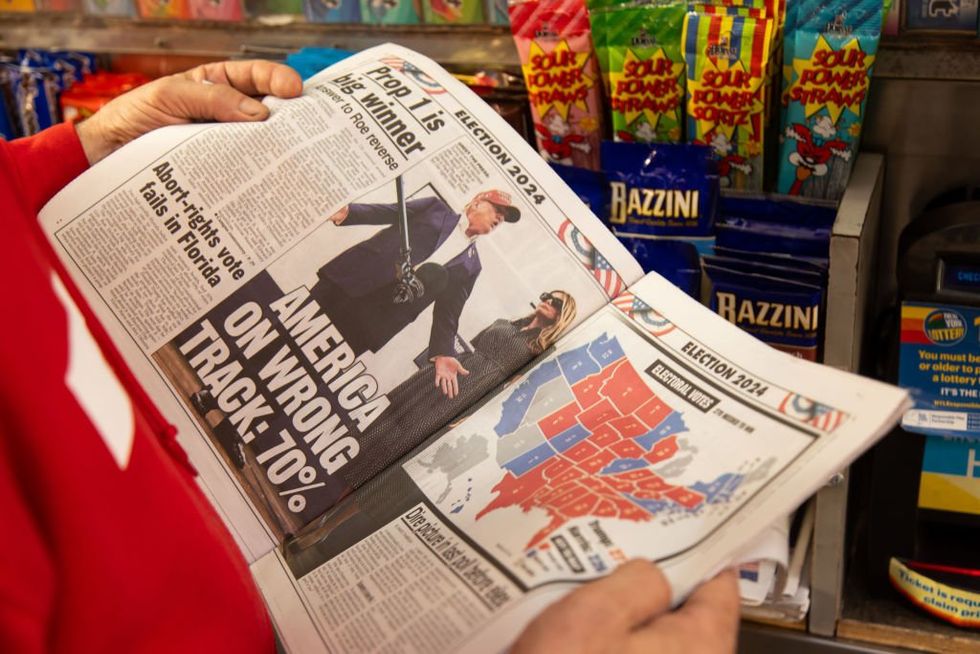How your wallet is paying for the government’s spending binge

The Treasury Department has released the receipts for federal spending in fiscal year 2024, revealing staggering numbers. While the $1.8 trillion deficit may seem less alarming than a $2.3 trillion shortfall, the Treasury accounted for an extra $500 billion in deficits in the opening days of fiscal year 2025 to achieve that figure. Regardless, neither the Federal Reserve nor the Treasury Department can escape the impact of these numbers. We have now reached a point where permanent stagflation seems unavoidable.
The Treasury Department’s final tab for fiscal 2024 shows a $1.83 trillion deficit, setting a near record aside from the unusual pandemic years of 2020-2021. This means the government borrowed $5 billion per day — the equivalent of the FBI’s entire annual budget a generation ago. In the third quarter of this calendar year (the final quarter of fiscal 2024), the deficit equaled 6.3% of GDP, a level only surpassed during World War II and the COVID-19 pandemic.
Republicans have failed to convey to the public that the government spending they rely on comes at a painful cost.
Despite relatively low unemployment and the absence of a world war, the government took in a record $4.918 trillion in revenue but still amassed a mammoth deficit. This gap is poised to grow in the new fiscal year, meaning that when a recession officially hits, the deficit could become colossal. Although the government collected $479 billion more in revenue than last year, it increased the deficit by spending an additional $617 billion. Imagine what the deficit might look like if revenue starts to decline.
In the past, we shrugged off such news, dismissing it as mere red ink on a spreadsheet. But that was when annual interest on the debt cost only $200 billion. Now, we’re on track to spend a record $1.133 trillion — or nearly a quarter of our tax revenue — just on interest. Debt interest is now more costly than every government expense except Social Security, contributing to the crippling inflation consumers face. We’re no longer mortgaging our grandchildren’s future; we’re destroying our own.
To cover this interest, the government must sell a record number of treasury bonds each month. With countries reducing their holdings of U.S. Treasuries and buying gold instead, treasury yields are rising unnaturally. Despite a drop in the federal funds rate, rising spending and the resulting debt service push yields higher. This shift has caused gold and treasury yields to surge simultaneously — a rare occurrence, as they typically move inversely. It’s also why the 30-year fixed mortgage rate has climbed nearly a full percent since the Federal Reserve cut rates by 50 basis points. T. Rowe Price forecasts that the 10-year Treasury yield could hit 5% over the next six months, approaching levels seen in late 2007 on the eve of the Great Recession.
When yields go up, debt servicing costs increase further, and the Fed has to print even more money to cover both the rollover debt and rapidly accumulating new debt — rising faster this year than last. Under this baseline scenario, inflation is bound to worsen. The global money supply now stands at $89.7 trillion, up by $22 trillion since COVID. After shrinking in 2022-2023, M2 is now expanding rapidly and is currently 38% higher than pre-COVID levels. Consumers are already struggling with high prices, and every market indicator signals a new round of even higher costs.
Consumers have exhausted their resources ahead of an impending financial collapse, spending $2.3 trillion in excess savings over the past three years to cope with the cost of living. Currently, cumulative excess savings are negative $216 billion, with U.S. credit card debt and interest rates at record highs.
Even without the threat of hyperinflation, these economic indicators always precede a crash. The unprecedented rallies in gold and silver are clear warnings, signaling grave danger. They indicate that the Federal Reserve, in its attempts to curb recession and inflation while printing money recklessly, has lost control, leaving us to face the consequences of both.
Republicans have failed to convey to the public that the government spending they rely on comes at a painful cost. It’s not just the $103,700 in debt that each American is responsible for in some distant future. It’s the additional tens of thousands they will pay each year to maintain their parents’ standard of living for the rest of their lives — and that’s assuming things don’t get worse.










